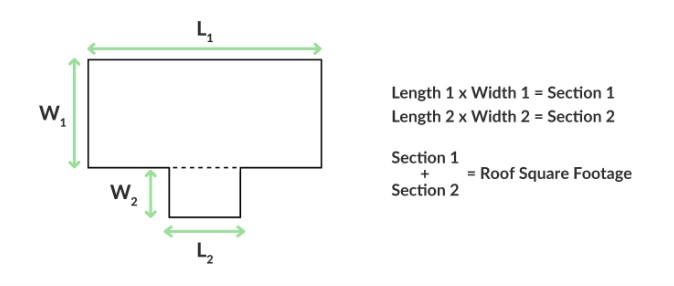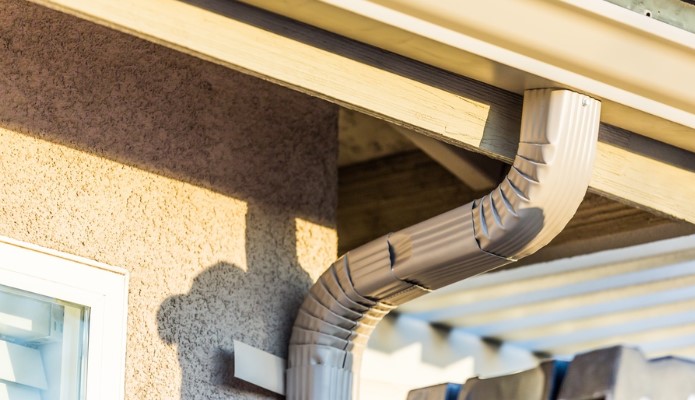In the United Kingdom, where rainfall is a common occurrence throughout the year, having properly sized gutters is crucial for effective water drainage and preventing potential damage to buildings. Whether you are renovating your home or constructing a new property, understanding how to measure gutter size accurately is essential.
Having a properly sized gutter system is crucial for efficiently directing rainwater away from your home’s foundation. Undersized gutters can overflow during heavy rain, leading to leaks, damp walls, and potential damage to your property. Conversely, oversized gutters are not only more expensive but may also be visually unappealing.
This guide aims to provide comprehensive instructions on measuring gutter size in the UK, ensuring that you can make informed decisions for your drainage system.
Understanding Gutter Systems
Gutter systems play a vital role in directing rainwater away from the roof and foundation of buildings, thereby protecting them from water damage. In the UK, various types of gutters are commonly used, including PVC, aluminum, and cast iron. Each type offers different advantages in terms of durability, cost, and aesthetics.
PVC gutters are lightweight, easy to install, and resistant to corrosion, making them a popular choice among homeowners. Aluminum gutters are lightweight, rust-resistant, and come in a variety of colors, providing both functionality and aesthetic appeal. Cast iron gutters are known for their traditional look and durability, making them suitable for heritage properties.
The Importance Of Choosing The Right Gutter Size
Choosing the right gutter size is crucial for the effective functioning of your drainage system and the overall protection of your property. The importance of selecting the appropriate gutter size cannot be overstated, as it directly impacts the system’s ability to manage rainwater runoff and prevent potential water damage. Here are several key reasons why choosing the right gutter size is essential:
- Proper Water Drainage: One of the primary functions of gutters is to channel rainwater away from the roof and foundation of your building. If the gutters are too small or narrow, they may not be able to handle the volume of water during heavy rainfall, leading to overflow and water pooling around the foundation. This can result in water seepage into the basement or crawl space, causing structural damage and potential mold growth.
- Prevention of Water Damage: Oversized gutters can be just as problematic as undersized ones. If the gutters are too large for the roof area they serve, they may not efficiently capture and channel water away from the building. This can result in water cascading over the edges of the gutters, causing erosion of the landscaping, damage to exterior walls, and staining of siding or brickwork.
- Compatibility with Downspouts: Choosing the right gutter size involves considering the compatibility with downspouts. If the gutters are too large or too small for the downspouts, it can lead to inefficiencies in water drainage. Properly sized gutters ensure that water can flow smoothly from the roof, through the downspouts, and away from the building without obstruction.
- Aesthetics and Property Value: The size of the gutters can also affect the aesthetic appeal and property value of your home or building. Oversized gutters may appear bulky and out of proportion with the roofline, detracting from the overall visual appeal of the property. Conversely, undersized gutters may be insufficient for the architectural design and size of the building, creating an unbalanced appearance.
- Long-Term Cost Savings: Investing in the right gutter size upfront can help you avoid costly repairs and maintenance issues down the line. Properly sized gutters are more effective at managing rainwater runoff, reducing the risk of water damage to the roof, foundation, and other structural components of the building. This can translate into long-term cost savings by minimizing the need for repairs and prolonging the lifespan of your property.
- Compliance with Building Regulations: In some regions, building codes and regulations may stipulate minimum requirements for gutter size based on factors such as roof area, rainfall intensity, and building type. Choosing the right gutter size ensures compliance with these regulations, avoiding potential fines or penalties for non-compliance.
Selecting the right gutter size is essential for maintaining proper water drainage, preventing water damage, preserving the aesthetic appeal of your property, and ensuring long-term cost savings. By carefully considering factors such as roof size, rainfall patterns, and building design, you can choose gutters that are properly sized.
Tools Needed for Measuring
Before you begin measuring your gutters, it’s essential to gather the necessary tools for the task. You will need a tape measure to accurately record the dimensions of your gutters.
- Additionally, a ladder may be required to access higher parts of the gutter system safely.
- It’s also helpful to have a pen and paper on hand to jot down measurements as you go.
- If you prefer, you can use a calculator to assist with any necessary calculations.
Steps to Measure Gutter Size
Exterior Measurement
Start by inspecting the exterior of your property to locate the gutters. Begin at one end of the gutter system and work your way around the building. Use the tape measure to measure the length of each section of the gutter, from one end to the other. Be sure to measure each section individually, as gutters may vary in length depending on the layout of your roof.
Width Measurement
Once you have measured the length of each section, it’s time to determine the width of the gutters. Measure the width from the back edge to the front edge, ensuring that you capture the full width of the gutter channel. Again, record the width measurement for each section of the gutter system.
Depth Measurement
Next, measure the depth of the gutters from the top edge to the bottom. This measurement will help you determine the capacity of the gutters to hold rainwater. Measure the depth at several points along each section of the gutter, as it may vary depending on the design of the gutter system.
Calculating Total Gutter Size
Once you have recorded the measurements for each section of the gutter, you can calculate the total gutter size. Add together the measurements of length, width, and depth for each section to determine the overall size of the gutter system. This total measurement will help you determine the appropriate size of replacement gutters if needed.

Image source: fixr
Additional Considerations
Factoring in the Slope
When measuring your gutter size, it’s essential to consider the slope of the gutters for proper water drainage. Gutters should have a slight slope towards the downspouts to ensure that rainwater flows away from the building efficiently. Use a level to check the slope of your gutters and make any necessary adjustments during installation.
Consulting a Professional
If you are unsure about how to measure your gutters or if you encounter any challenges during the process, don’t hesitate to seek advice from a professional. A qualified gutter installer can offer guidance and assistance to ensure that your gutter system is installed correctly and functions effectively.
Regular Maintenance
Once you have installed your gutters, it’s important to maintain them regularly to prevent clogs and ensure optimal performance. Clean your gutters regularly to remove debris such as leaves, twigs, and dirt that can accumulate and block the flow of water. Additionally, inspect your gutters for any signs of damage or wear and tear, such as rust, leaks, or sagging, and address any issues promptly to prevent further damage.

Image source: big5
Conclusion
Understanding how to measure gutter size accurately is essential for maintaining proper drainage and protecting your property from water damage. By following the steps outlined in this guide and considering additional factors such as slope and maintenance, you can ensure that your gutter system functions effectively year-round.
Remember to consult a professional if you need assistance, and prioritize regular maintenance to keep your gutters in top condition. With the right approach, you can enjoy a reliable and efficient gutter system that safeguards your home for years to come.
Frequently Asked Questions (FAQs)
To determine the size of your gutters, you can measure the width across the top opening of the gutter. This is typically expressed in inches, such as 5 or 6 inches.
The formula for gutter size is to measure the width across the top opening of the gutter. This width is often expressed in inches and commonly comes in sizes like 5 or 6 inches.
Gutters come in various sizes, but there are some common standard sizes like 5 or 6 inches. However, it’s essential to measure your gutters to ensure accuracy.
To determine if your gutter is 5 or 6 inches, measure the width across the top opening of the gutter. If it measures around 5 inches, it’s a 5-inch gutter; if it measures around 6 inches, it’s a 6-inch gutter.
